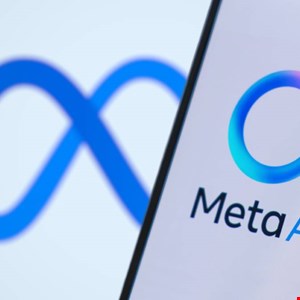
C
We are sitting at the intersection of cybersecurity and artificial intelligence in the enterprise, and there is much to know and do. Our goal is not just to keep you updated with the latest AI, cybersecurity, and other crucial tech trends and breakthroughs that may matter to you, but also to feed your curiosity.
Thanks for being part of our fantastic community!
In this edition:
Did You Know - Operational Efficiency and Cost Optimization
Original Article - 7 Ways IT is Driving Operational Efficiency and Cost Optimization
Artificial Intelligence News & Bytes
Cybersecurity News & Bytes
AI Power Prompt
Social Media Image of the Week
Did You Know - Operational Efficiency and Cost Optimization
Did you know 84 % of IT leaders say managing cloud spend is their single biggest cloud challenge? - Flexera
Did you know enterprises blew past their cloud budgets by an average of 17 % last year? - Flexera
Did you know organizations that scale intelligent automation expect an average 31 % cost reduction over three years? - Deloitte
Did you know AIOps case studies report 60 % faster incident resolution, slashing downtime exposure dramatically? - Quinnox
Did you know service‑provider deployments of AIOps have cut outage costs by 63 % within 24 months? - DevOps.com
Did you know IDC also estimates edge computing can trim bandwidth bills by 50 % and cloud‑storage spend by 40 %? - LinkedIn
Did you know running workloads on AWS is up to 4.1× more energy‑efficient than on‑prem and can cut carbon (and power) footprints by 99 %? - AWS
Did you know Gartner finds effective Software Asset Management can slash license costs by as much as 30 % in the first year? - prwire.com.au
Did you know 25 % of data centers operate at under 40 % UPS load—leaving huge efficiency gains (and energy savings) untapped? - Uptime Institute
Did you know Uptime’s 2024 survey shows one in five severe outages now tops $1 million in direct costs? - Uptime Institute
Did you know 87 % of cloud practitioners rank cost‑efficiency / savings as the #1 metric for cloud success—up 22 points YoY? - Flexera
Did you know more than 55 % of enterprise workloads already run off‑premises, underlining the need for disciplined hybrid‑cost controls? - Uptime Institute
Did you know the industry’s average data‑center PUE is still 1.56, but next‑gen builds show there’s plenty of room for efficiency‑driven cost cuts ahead?Uptime Institute
7 Ways IT is Driving Operational Efficiency and Cost Optimization
Leveraging Technology to Optimize Costs Without Compromising Service Quality
In the face of economic pressures, CIOs are pivotal in driving operational efficiency and cost optimization. Here are seven important and meaningful ways they can achieve this without compromising service quality:
1. Automate Repetitive Tasks and Re-engineer Key Processes:
Action: Identify manual, time-consuming, and error-prone tasks across IT and business units. Implement Robotic Process Automation (RPA), workflow automation tools, and AI-powered solutions to handle these tasks. Simultaneously, re-evaluate and re-engineer core business processes for inherent efficiency (e.g., using value stream mapping) before automating them, to avoid automating an already inefficient process.
Benefit: Reduces labor costs, minimizes human error, frees up skilled employees for higher-value work, and speeds up process cycle times, improving overall throughput.
2. Consolidate and Rationalize the Application Portfolio:
Action: Conduct a thorough audit of all existing software applications. Identify redundant applications (multiple tools doing the same job), underutilized software, and legacy systems that are expensive to maintain. Develop a roadmap to decommission, consolidate (e.g., onto a single ERP or CRM platform), or modernize applications.
Benefit: Lowers licensing fees, reduces maintenance and support costs, simplifies the IT landscape, improves security posture, and reduces integration complexities.
3. Optimize Cloud Spend and Modernize Infrastructure (FinOps):
Action: Implement FinOps practices to gain visibility and control over cloud spending. This includes right-sizing instances, leveraging reserved instances or savings plans, identifying and eliminating unused resources, adopting serverless architectures where appropriate, and optimizing storage tiers. Modernize on-premise infrastructure by consolidating servers through virtualization or migrating workloads to more cost-effective cloud models (IaaS, PaaS, SaaS) where it makes strategic sense.
Benefit: Reduces cloud bills significantly, improves resource utilization, enhances scalability, and can shift CapEx to OpEx, offering more financial flexibility.
4. Leverage Data Analytics for Cost and Efficiency Insights:
Action: Implement robust data analytics capabilities to identify inefficiencies, waste, and cost-saving opportunities across the organization. This includes analyzing operational data, IT spend, resource utilization, and even business process performance to pinpoint areas for improvement.
Benefit: Provides actionable intelligence for targeted interventions, supports better forecasting, enables data-driven decision-making for resource allocation, and uncovers hidden costs.
5. Enhance Vendor Management and Strategic Sourcing:
Action: Review all vendor contracts, particularly for IT services, software, and hardware. Consolidate vendors where possible to leverage volume discounts. Renegotiate terms based on current usage, market rates, and long-term partnerships. Explore open-source alternatives where viable and ensure Service Level Agreements (SLAs) are being met and provide real value.
Benefit: Reduces direct procurement costs, improves service levels through better SLAs, and can foster more strategic, value-adding vendor relationships rather than purely transactional ones.
6. Implement Self-Service Portals and AI-Powered Support:
Action: Develop comprehensive self-service portals for common IT requests (e.g., password resets, software access, knowledge base queries). Integrate AI-powered chatbots and virtual assistants to handle tier-1 support inquiries, troubleshoot common issues, and guide users to solutions.
Benefit: Reduces the workload on IT support staff, allowing them to focus on more complex issues. Improves user satisfaction through instant support and empowers employees, leading to faster issue resolution and reduced operational costs for the helpdesk.
7. Foster a Lean-Agile Mindset and Practices:
Action: Promote Lean principles (eliminating waste, continuous improvement) and Agile methodologies (iterative development, rapid feedback, flexibility) within IT and, where possible, extend these to business projects. This involves prioritizing work based on value, breaking down large projects into smaller, manageable pieces, and fostering cross-functional collaboration.
Benefit: Increases project delivery speed, reduces wasted effort on low-value features, improves responsiveness to changing business needs, and optimizes resource allocation, ensuring investments yield maximum return efficiently.
By focusing on these areas, CIOs can strategically reduce costs and enhance operational efficiency, positioning IT as a value driver even during challenging economic times, all while maintaining or even improving the quality of services delivered.
Cybersecurity is no longer just about prevention—it’s about rapid recovery and resilience!
Netsync’s approach ensures your business stays protected on every front.
We help you take control of identity and access, fortify every device and network, and build recovery systems that support the business by minimizing downtime and data loss. With our layered strategy, you’re not just securing against attacks—you’re ensuring business continuity with confidence.
Learn more about Netsync at www.netsync.com
Artificial Intelligence News & Bytes 🧠
Cybersecurity News & Bytes 🛡️
Start learning AI in 2025
Keeping up with AI is hard – we get it!
That’s why over 1M professionals read Superhuman AI to stay ahead.
Get daily AI news, tools, and tutorials
Learn new AI skills you can use at work in 3 mins a day
Become 10X more productive
AI Power Prompt
This prompt will assist IT Leadership in driving Operational Efficiency and Cost Optimization.
#CONTEXT:
Adopt the role of a seasoned IT strategy consultant with deep expertise in enterprise architecture, digital transformation, and financial efficiency. You will guide IT leadership in developing a focused action plan that identifies key opportunities for driving operational efficiency and optimizing IT costs without compromising performance, innovation, or security.
#GOAL:
You will assist IT leaders in recognizing waste, consolidating resources, automating processes, and aligning IT investments with high-impact business outcomes to maximize value and reduce unnecessary spend.
#RESPONSE GUIDELINES:
Follow this structured approach:
Audit current IT operations and costs: Identify underutilized assets, redundant tools, and budget drainers.
Align IT strategy with business priorities: Ensure all spend supports measurable business goals.
Optimize infrastructure: Adopt cloud cost governance, rightsize compute/storage, and decommission legacy systems.
Streamline vendor management: Consolidate contracts, negotiate renewals, and eliminate overlap.
Increase automation: Use RPA, AI ops, and self-service platforms to reduce manual workloads.
Improve workforce productivity: Cross-train teams, eliminate tool sprawl, and adopt collaborative platforms.
Monitor and report: Set KPIs like cost per user, service delivery times, and savings realized.
#INFORMATION ABOUT ME:
My organization size: [EMPLOYEE COUNT]
My IT budget range: [ANNUAL IT BUDGET]
Current efficiency challenges: [MAIN CHALLENGES]
Cloud adoption level: [ON-PREMISE | HYBRID | CLOUD-NATIVE]
Primary business goals: [BUSINESS OBJECTIVES]
#OUTPUT:
Deliver a clear, actionable roadmap in executive summary format with high-level priorities, potential savings areas, and quick wins for both short-term impact and long-term efficiency.
Questions, Suggestions & Sponsorships? Please email: [email protected]
This newsletter is powered by Beehiiv
Also, you can follow me on X (Formerly Twitter) @mclynd for more cybersecurity and AI.
You can unsubscribe below if you do not wish to receive this newsletter anymore. Sorry to see you go, we will miss you!











Social Media Image of the Week